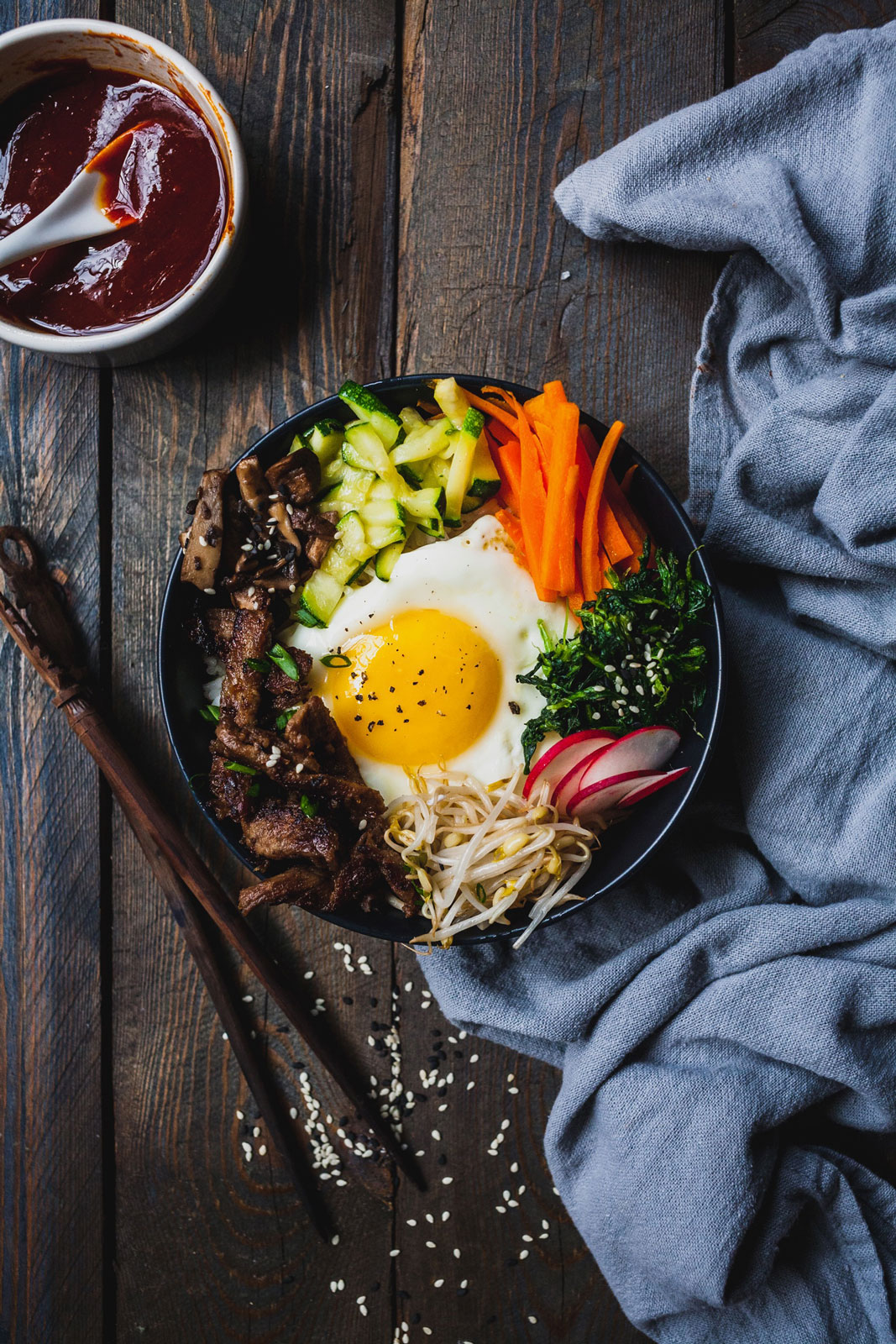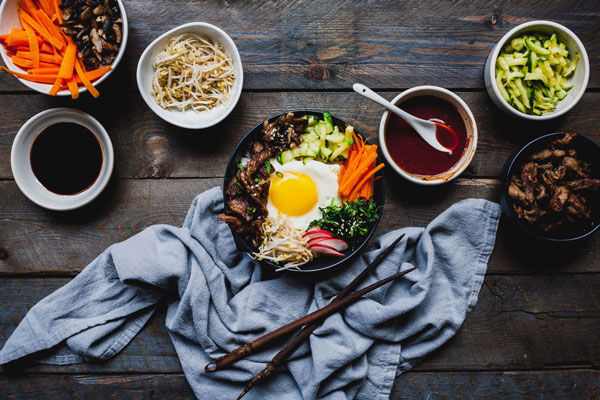Make Delicious Beef Bibimbap
One of my favourites dishes to eat and make and most requested by my husband is beef bulgogi. I love making it too and when I make it I like to make bibimbap with it. The word bibimbap literally means “mixed rice” and really and truly that is what it is. A bowl of warm white rice topped with meat, veggies and sauces. That is very simplified. There are many variations of the dish and even the sauces used in the dish. This one that I’m sharing is a simple and basic rendition of it and the ever popular Korean beef - beef bulgogi.
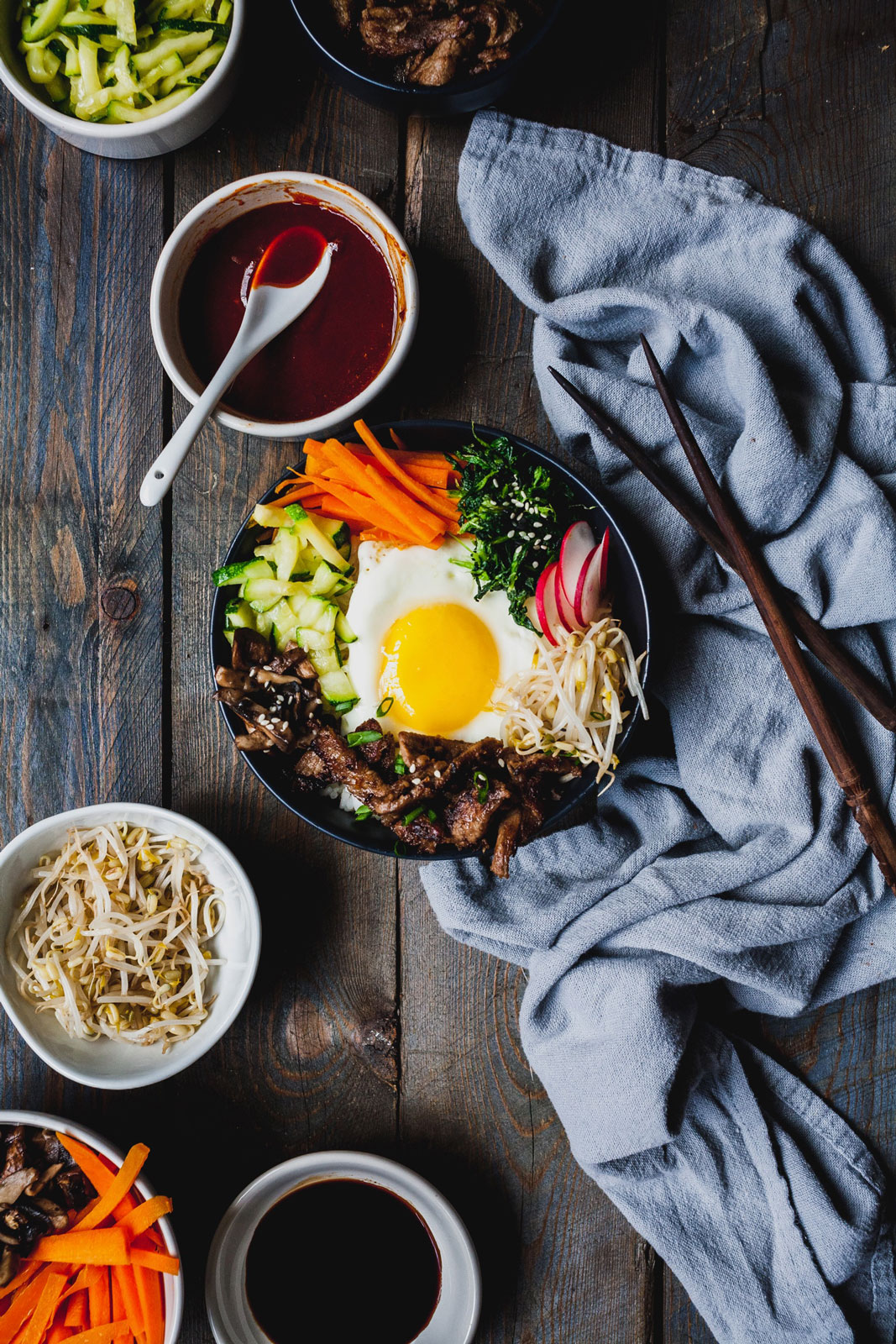
The meat usually cooked in Korean dishes is sliced very thinly and marinated for tenderness. Beef bulgogi is just mouthwateringly good and is wildly popular for its delicious garlicky and slightly sweet flavours. It’s one of those flavors that you can easily recall everytime you think of it. It has a signature flavour. I have a full post and recipe just for beef bulgogi on the blog if you want to check it out. I have included the recipe for the bulgogi below as well.
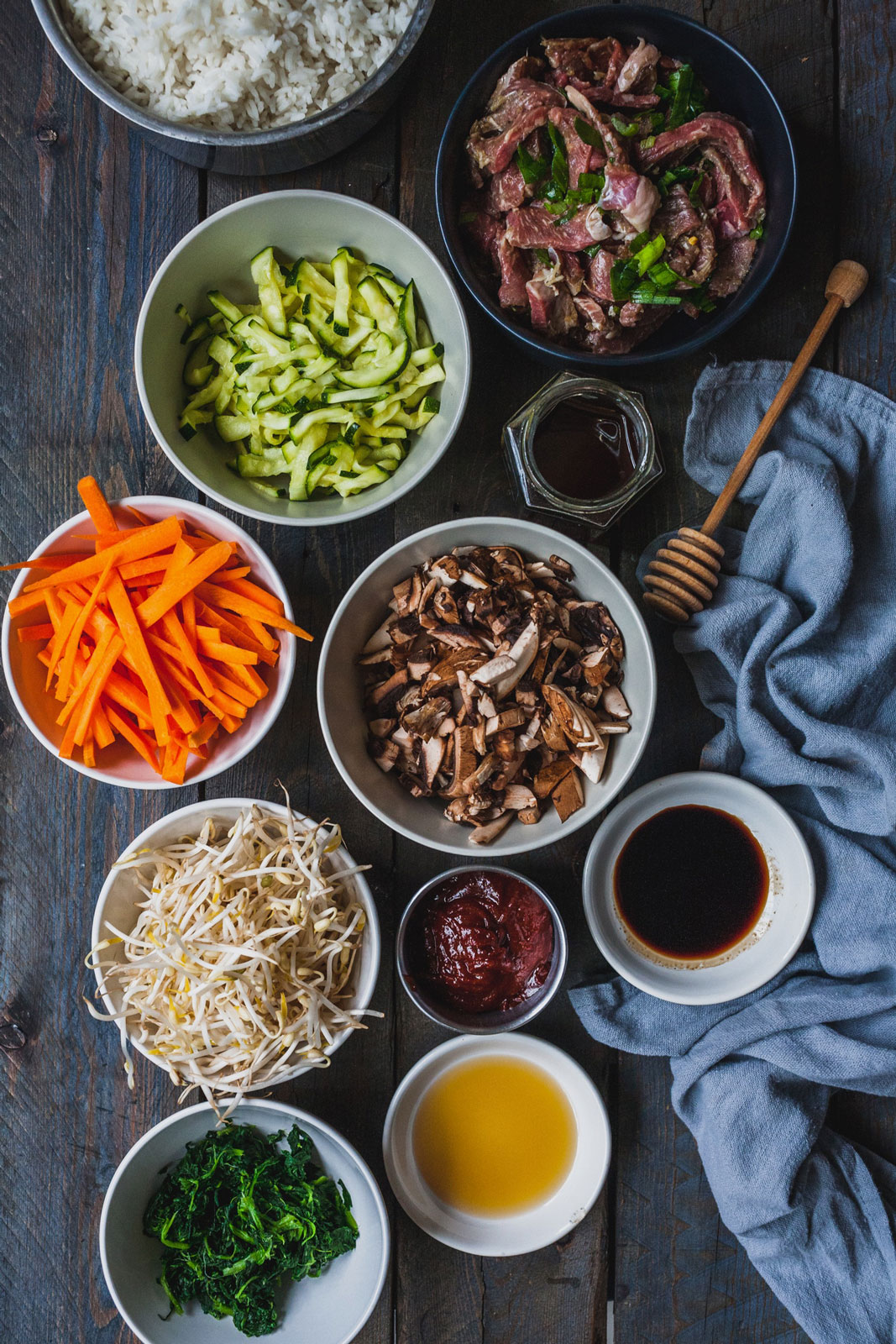
I’m pretty wild about rice just in case you didn’t already know. Any rice and done any way. Give me veggies and rice for life and I would be a happy camper. I love this recipe for it’s versatility. You can build your own bibimbap with the veggies you have in your fridge just slice them and sauté them in a little sesame oil or peanut oil and season with salt and pepper. This may seem bland but your building flavours by adding different veggies as you can see in the pictures. The more veggies the better.
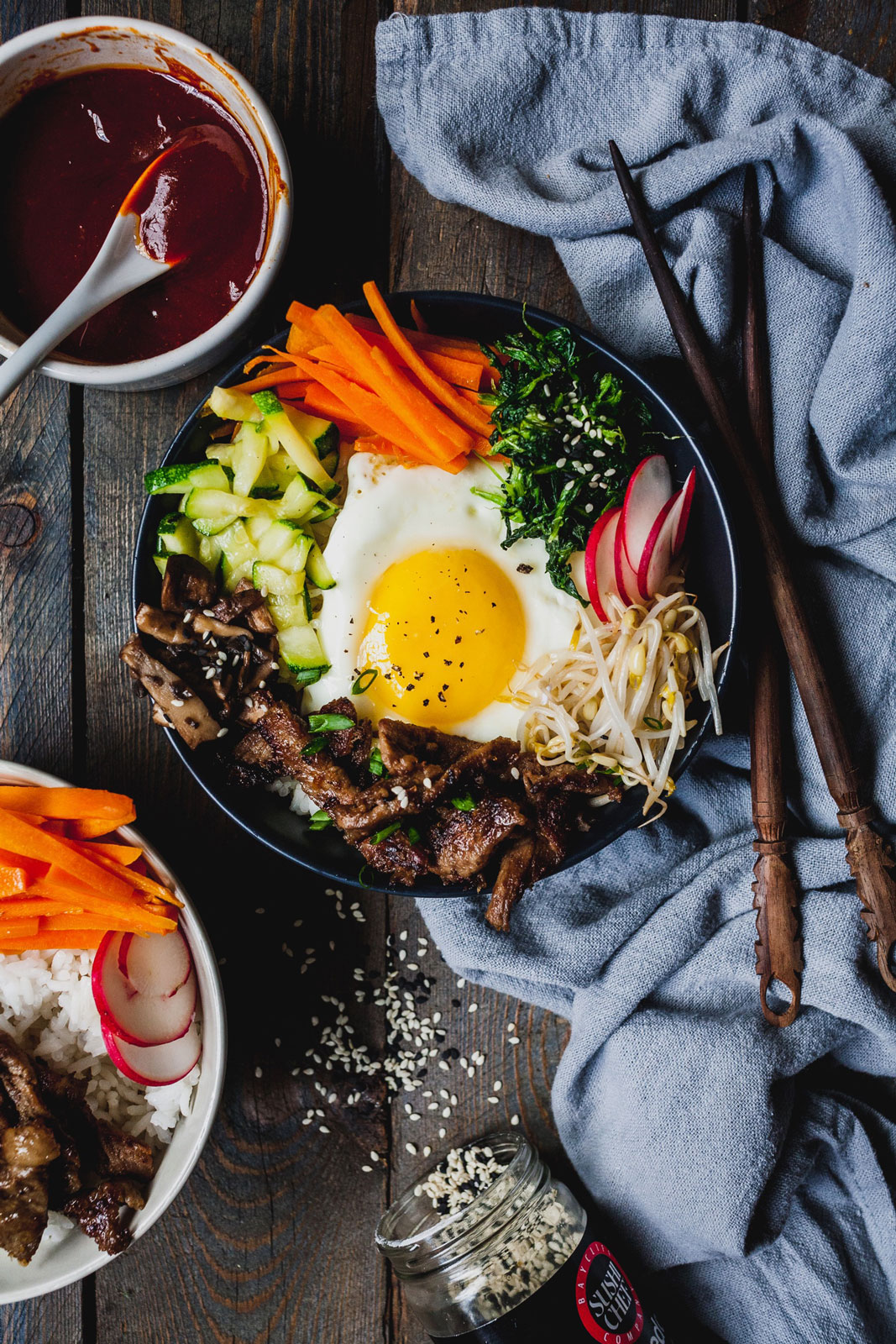
Another very important component of bibimbap is the sauce. There are several complex sauces in Korean cuisine. Gochujang is one of them and one of my favorites. It has complex flavour with some heat. I use store bought gochujang paste to make a sauce for the dish which is perfect with the dish and I included how I make it below.
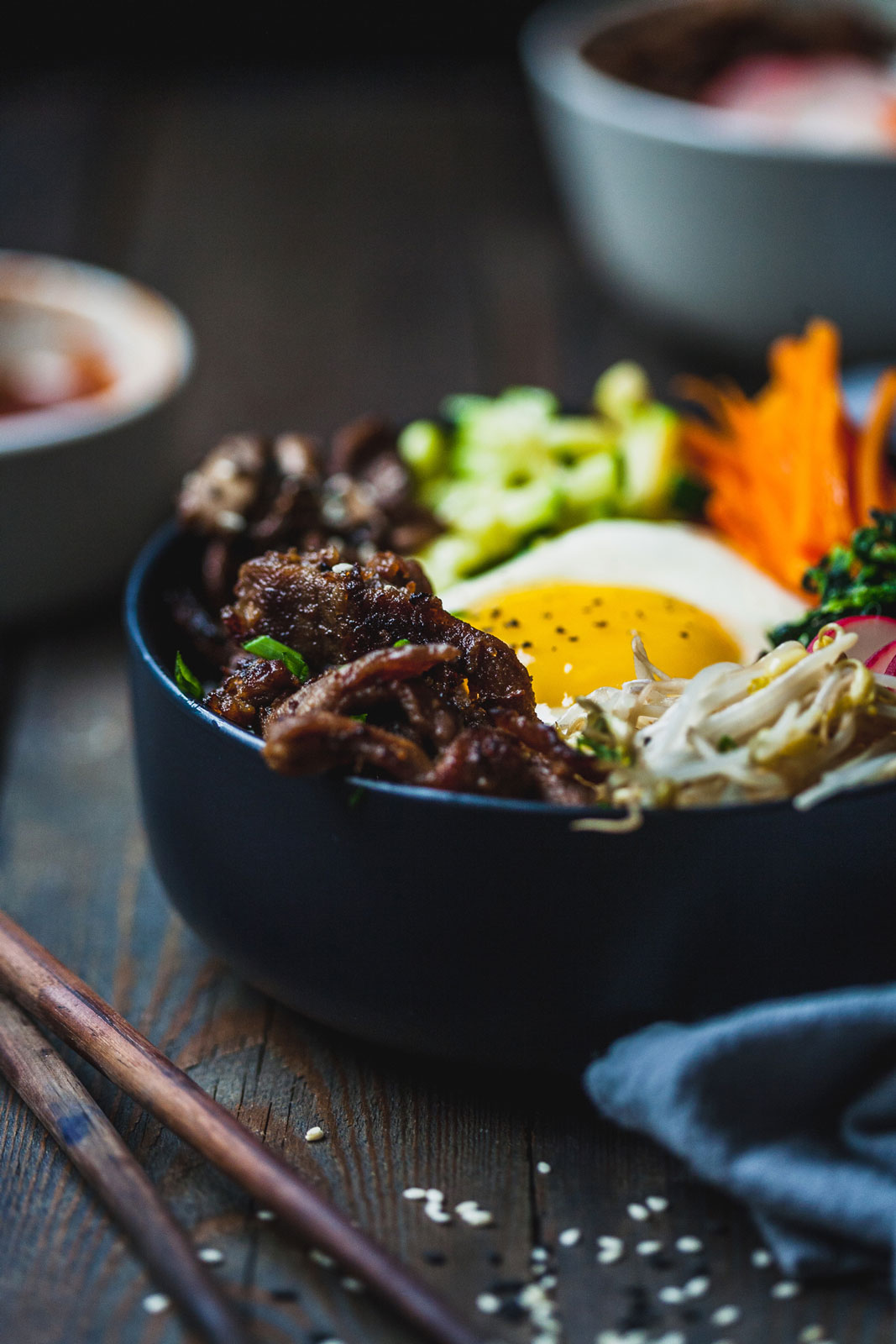
There are other sauces that you can add and also fermented cabbage or as it’s called kimchi as well which is absolutely great for you and so delicious. I also like to add some extras into my bibimbap for some crunch and texture like sliced radishes and sesame seeds.
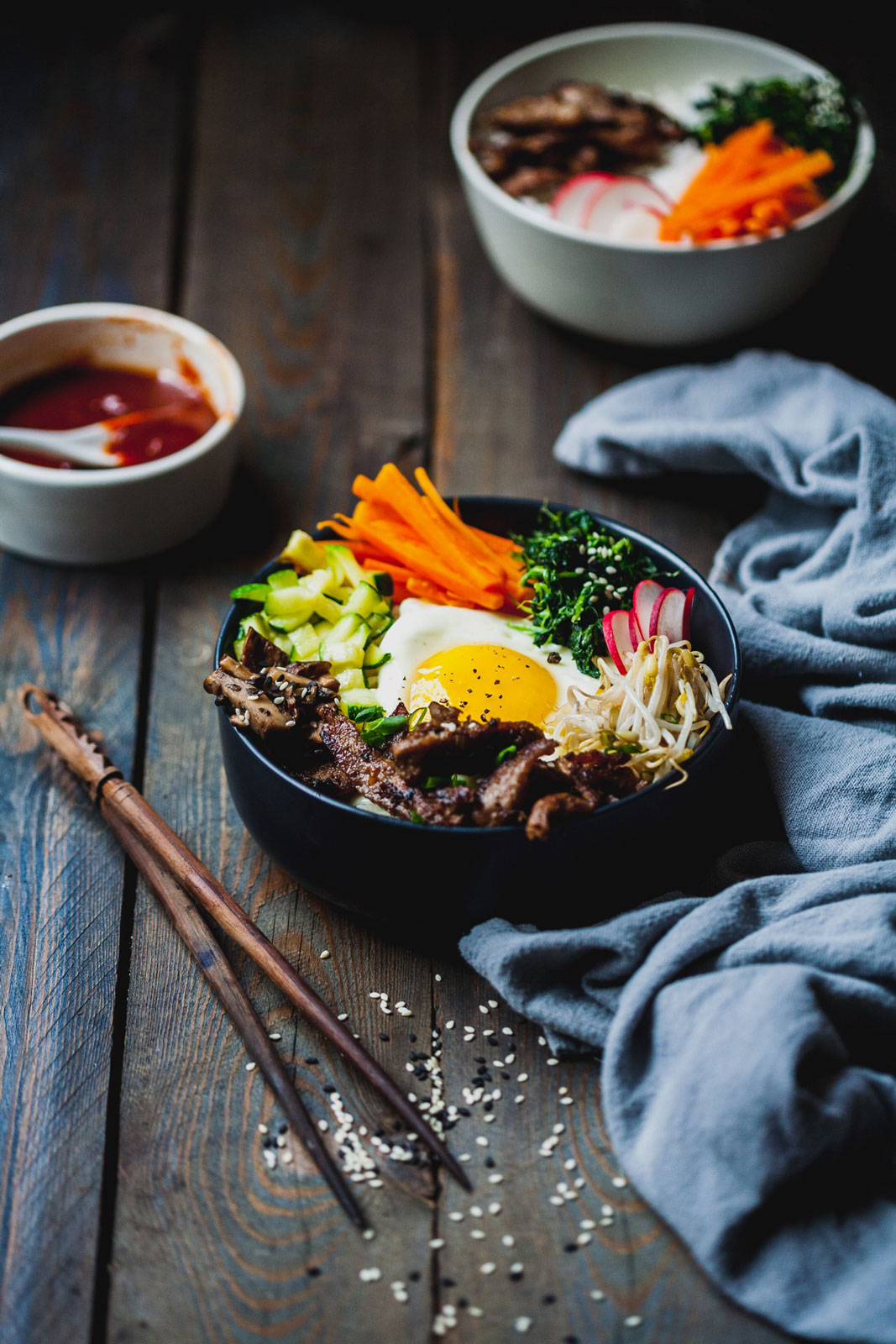
Believe it or not my first Korean food experience was not beef bulgogi or bibimbap but Korean spicy beef soup. They served it scalding hot and with an egg on the side. A raw one that you crack open or they crack open for you upon serving. The broth is so hot it cooks the egg. It was a fabulous experience. The broth is spicy and very complex and funky cause there are so many flavours that go into it. Although I loved the soup what kept me going back was the bibimbap and bulgogi and I usually got a small soup or broth on the side with some simple prep I knew it could be made at home so here is the recipe for this healthy and delicious meal so you can make it and enjoy it from your own home as well.
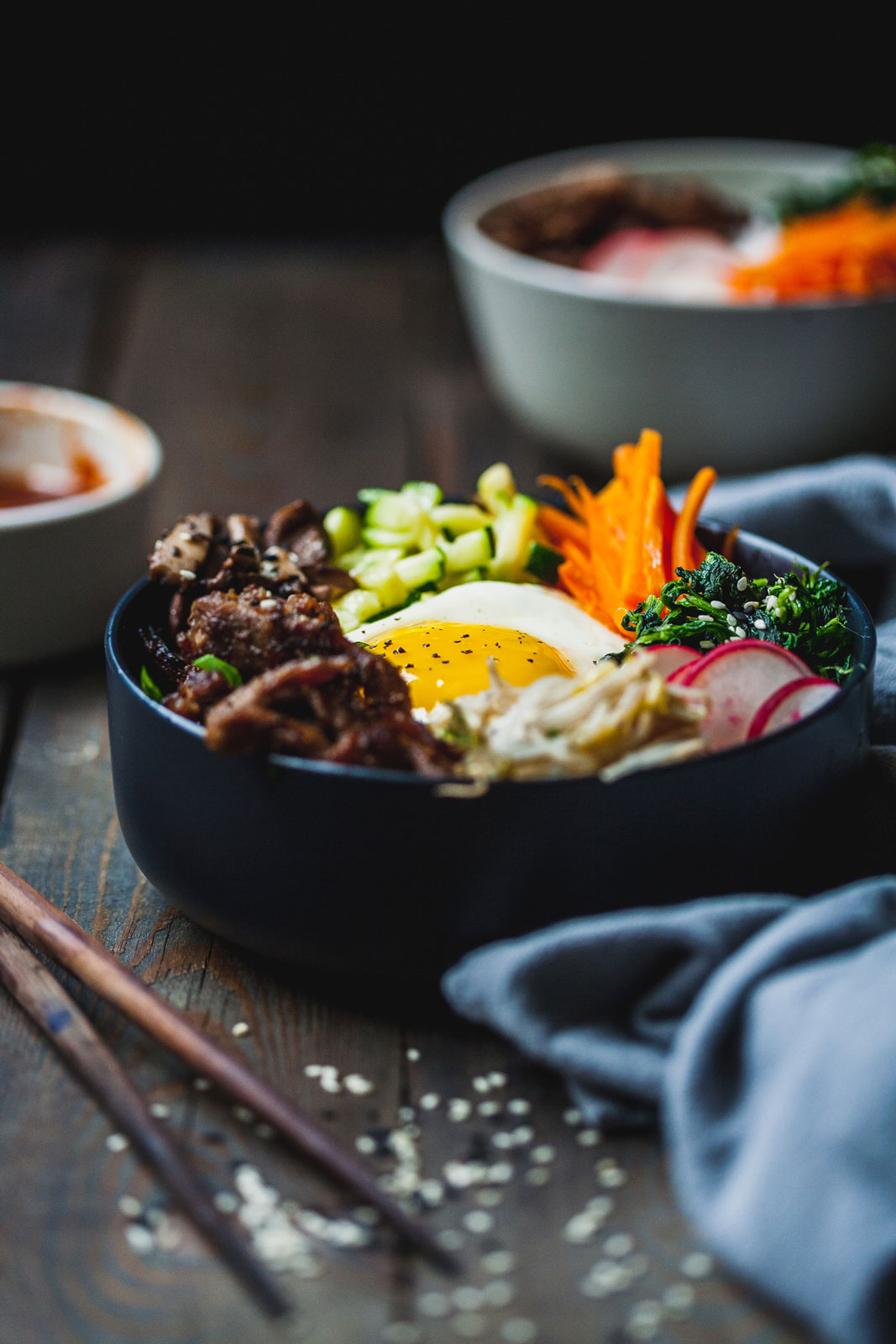
Recipe
Ingredients
- 2 cups white rice cooked according to package (I used Jasmin)
- Beef Bulgogi – see recipe below
- 1 medium zucchini’s julienned, Lay it out flat on a plate, and generously sprinkle it with salt. Let it sit for about 10–15 minutes and then squeeze out excess liquid and sauté in a little sesame oil and salt
- 1 carrot, julienned, sauteed in peanut oil and seasoned with salt and set aside
- Cooked bean sprouts, sauteed in a little sesame oil or peanut oil and seasoned with salt and set aside
- 1 cup spinach, sauteed in a little sesame or peanut oil and seasoned with salt (if using frozen:Bring a pot of water to a boil. Add the spinach and cook for only about half a minute. Strain, run under cold water, and squeeze out all of the excess water – before sautéing)
- 4 shiitake mushrooms, thinly sliced and sauteed in peanut oil and seasoned with salt and set aside
- 1 egg per serving, cooked over easy (optional)
- 1 tablespoon sesame seeds
- 1 tablespoon dark sesame oil
- Soy sauce, to taste
- Gochuchang Paste, recipe below
Directions
- Put cooked rice in large slightly shallow bowl.
- Place bulgogi (with juices from cooked meat) and veggies on top of rice but place separately so you can see each ingredient beautifully placed on rice.
- Put egg on top.
- Sprinkle with sesame seeds and drizzle with sesame oil and soy sauce and also a dollop of gochujang.
- When ready to eat, mix all ingredients together with some gochuchang sauce and enjoy. The bibimpap should be moist and not dry. Add more sesame oil and gochuchang sauce to taste.
Beef Bulgogi
Ingredients
The marinade
- 1 lb of beef tenderloin, sirloin or striploin cut into thin slices
- ½ cup peeled and grated pear
- ¼ cup of white wine
- ¼ cup of grated onion
- 4 cloves of garlic grated
- ½ tsp chili flakes (optional if you don’t like spice)
- 2 chives, scallions of green onions minced
- 2 tbsp tamari or soy sauce
- 2 tbsp of honey or brown sugar
- 1 tbsp sesame oil
Directions
For the beef
- In a small sealable container or bag combine all the ingredients for the marinade
- Slice you beef very thinly and add to the bag of marinade, toss it around to fully coat and marinate in the fridge for one hour or overnight for more flavour.
- Once ready to cook remove the beef from bag or container and set aside in a small bowl but reserve marinade and liquids.
- In a separate medium sized pan heat up the other tbsp of oil at medium high heat and once the pan is very hot add the beef and sauté it until golden brown. This doesn’t take long. Don’t move it around too much otherwise it wont get that golden slight char on it.
For the gochujang sauce
- 4 tablespoons gochuchang (available at Korean grocers)
- 1 tablespoon honey plus more to taste
- 2 teaspoons sesame oil
- Combine all ingredients in a small bowl. Mix well.
